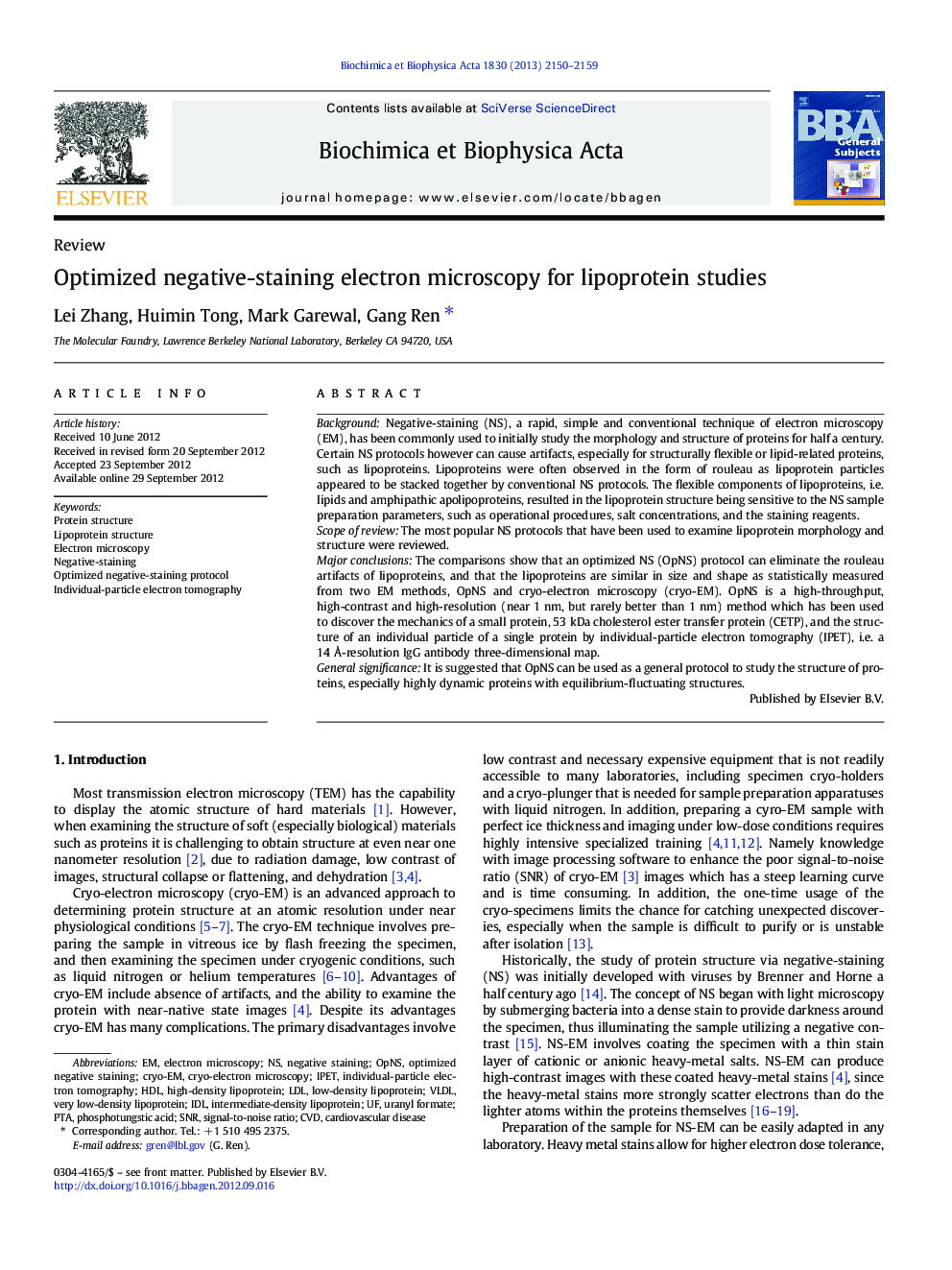| Article ID | Journal | Published Year | Pages | File Type |
|---|---|---|---|---|
| 1947643 | Biochimica et Biophysica Acta (BBA) - General Subjects | 2013 | 10 Pages |
BackgroundNegative-staining (NS), a rapid, simple and conventional technique of electron microscopy (EM), has been commonly used to initially study the morphology and structure of proteins for half a century. Certain NS protocols however can cause artifacts, especially for structurally flexible or lipid-related proteins, such as lipoproteins. Lipoproteins were often observed in the form of rouleau as lipoprotein particles appeared to be stacked together by conventional NS protocols. The flexible components of lipoproteins, i.e. lipids and amphipathic apolipoproteins, resulted in the lipoprotein structure being sensitive to the NS sample preparation parameters, such as operational procedures, salt concentrations, and the staining reagents.Scope of reviewThe most popular NS protocols that have been used to examine lipoprotein morphology and structure were reviewed.Major conclusionsThe comparisons show that an optimized NS (OpNS) protocol can eliminate the rouleau artifacts of lipoproteins, and that the lipoproteins are similar in size and shape as statistically measured from two EM methods, OpNS and cryo-electron microscopy (cryo-EM). OpNS is a high-throughput, high-contrast and high-resolution (near 1 nm, but rarely better than 1 nm) method which has been used to discover the mechanics of a small protein, 53 kDa cholesterol ester transfer protein (CETP), and the structure of an individual particle of a single protein by individual-particle electron tomography (IPET), i.e. a 14 Å-resolution IgG antibody three-dimensional map.General significanceIt is suggested that OpNS can be used as a general protocol to study the structure of proteins, especially highly dynamic proteins with equilibrium-fluctuating structures.
► Negative-staining (NS) EM is a rapid, common method to examine protein structure. ► We reviewed the most popular NS protocols used to examine lipoproteins. ► The rouleau artifact of lipoproteins was commonly observed using conventional NS protocol. ► The optimized NS (OpNS) protocol can eliminate these rouleau artifacts. ► OpNS can be used as a general protocol to study the structure of proteins.
